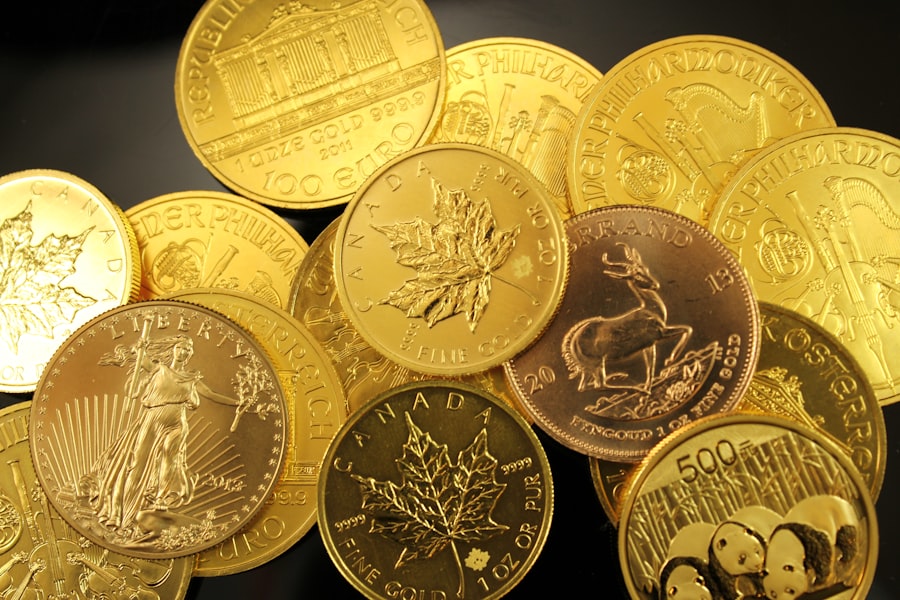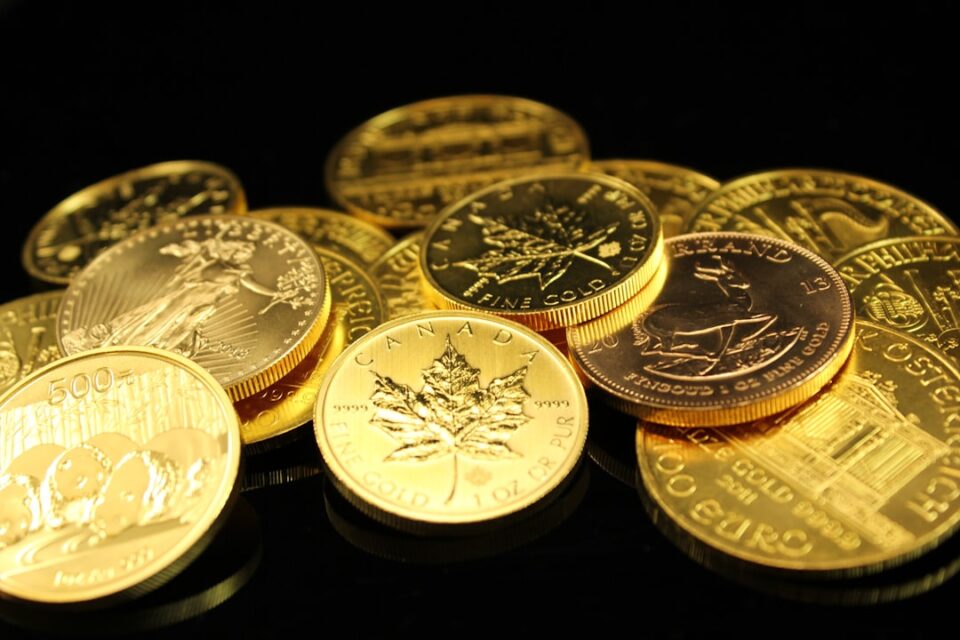Gold has long been revered as a symbol of wealth and a reliable store of value. For centuries, physical gold in the form of coins, bars, and jewelry has been a tangible asset that individuals and institutions have turned to during times of economic uncertainty. Its intrinsic value, historical significance, and universal acceptance make it a preferred choice for many investors.
However, the advent of technology has introduced a new player in the gold market: digital gold. This modern iteration allows investors to buy, sell, and trade gold in a digital format, often through online platforms that promise ease of access and convenience. Digital gold represents ownership of physical gold stored in secure vaults, but it is traded electronically.
This innovation has transformed how people interact with gold as an asset class. While physical gold requires storage and security considerations, digital gold eliminates many of these logistical challenges. The rise of digital gold has sparked debates among investors regarding the merits and drawbacks of each form.
As we delve deeper into the nuances of physical versus digital gold, it becomes essential to understand their respective market accessibility, storage requirements, liquidity, volatility, regulatory frameworks, investment options, and future trends.
Key Takeaways
- Physical gold offers tangible value and is a traditional form of investment, while digital gold provides a convenient and accessible way to invest in gold.
- Digital gold offers market accessibility and convenience through online platforms, making it easier for investors to buy, sell, and trade gold.
- Storage and security are important considerations for physical gold, while digital gold eliminates the need for physical storage and offers secure transactions through blockchain technology.
- Physical gold may have higher liquidity and transaction costs compared to digital gold, which can be easily traded and converted into cash.
- Market volatility and price fluctuations affect both physical and digital gold, making it important for investors to consider the risks and potential returns.
- Regulatory and legal considerations differ for physical and digital gold, with digital gold being subject to additional regulations related to technology and cybersecurity.
- Investors can diversify their portfolio by including both physical and digital gold, as well as gold-related assets such as mining stocks and ETFs.
- Future trends in the gold market may include increased adoption of digital gold, technological advancements in gold trading, and potential shifts in global economic and geopolitical factors impacting gold prices.
Market Accessibility and Convenience
Accessibility and Democratization of Investment
Digital gold offers unparalleled accessibility, allowing investors to purchase it from anywhere in the world with an internet connection. This can be done through mobile applications or online trading platforms, making it easy for individuals to participate in the market. This ease of access democratizes investment opportunities, enabling those who may not have the means or desire to invest in physical gold to join in.
Convenience and Affordability
Platforms like Vaulted and Goldmoney have made it possible for users to buy fractional amounts of gold, allowing even small investors to gain exposure to this precious metal without the need for substantial capital. In contrast, acquiring physical gold can be a more cumbersome process, requiring investors to locate reputable dealers, navigate pricing fluctuations, and consider shipping or handling fees if purchasing online.
The Convenience of Instant Transactions
The physical nature of gold necessitates a more hands-on approach to buying and selling. While some may appreciate the tactile experience of holding gold coins or bars, others may find the logistics daunting. Digital gold, on the other hand, allows for instant transactions and real-time price tracking, catering to a generation accustomed to immediate gratification in their financial dealings.
Storage and Security

When it comes to storage and security, physical gold presents unique challenges that digital gold effectively circumvents. Owning physical gold requires secure storage solutions to protect against theft or loss. Investors often resort to safety deposit boxes at banks or private vaults, which can incur additional costs.
Moreover, the responsibility for safeguarding this asset lies entirely with the owner. In the event of theft or damage, recovering losses can be complicated and may not always be fully covered by insurance. Digital gold, on the other hand, is stored in secure vaults managed by reputable companies that specialize in precious metals.
These firms typically employ advanced security measures, including high-tech surveillance systems and insurance coverage for the stored assets. This arrangement alleviates concerns about theft or loss for investors who choose digital gold. Furthermore, the ability to access account information online provides transparency regarding ownership and storage status.
However, it is crucial for investors to conduct due diligence on the companies offering digital gold services to ensure they are reputable and trustworthy.
Liquidity and Transaction Costs
| Metrics | Value |
|---|---|
| Spread | 0.05% |
| Volume | 1,000,000 shares |
| Bid-Ask Ratio | 1:1.5 |
| Market Depth | 10 levels |
Liquidity is a critical factor for investors when considering any asset class. Physical gold can be less liquid than its digital counterpart due to the time and effort required to sell it. Finding a buyer willing to pay a fair price can be challenging, especially if one is looking to sell smaller quantities or specific types of gold products.
Additionally, transaction costs associated with selling physical gold can include dealer premiums and shipping fees, which can eat into potential profits. Digital gold offers enhanced liquidity as transactions can be executed almost instantaneously on various platforms. Investors can buy or sell their holdings at market prices with just a few clicks, often without incurring significant transaction costs.
Many digital gold platforms also provide transparent pricing structures that allow users to understand fees upfront. This ease of trading makes digital gold an attractive option for those who prioritize quick access to their investments or wish to capitalize on short-term market movements.
Market Volatility and Price Fluctuations
Both physical and digital gold are subject to market volatility and price fluctuations influenced by various factors such as geopolitical events, inflation rates, currency strength, and changes in demand from central banks or investors. Historically, gold has been viewed as a safe-haven asset during times of economic turmoil; however, its price can still experience significant swings based on market sentiment. Digital gold may exhibit similar price behavior as physical gold since it is often pegged to the same underlying asset.
However, the mechanisms through which these price fluctuations occur can differ. Digital gold platforms may introduce additional layers of complexity due to their trading structures or market dynamics. For instance, if a platform experiences high trading volumes or technical issues during periods of volatility, it could impact the execution of trades or lead to discrepancies in pricing.
Investors must remain vigilant about these potential risks when engaging with digital gold markets.
Regulatory and Legal Considerations

Regulatory Landscape of Physical Gold
The laws governing physical gold transactions vary significantly across different regions. Generally, these transactions are subject to established laws that regulate precious metals trading. These laws often include taxation policies and reporting requirements for large transactions. As a result, investors must be aware of their local regulations regarding the ownership and sales of physical gold to ensure compliance.
Regulatory Complexities of Digital Gold
Digital gold introduces additional regulatory complexities due to its reliance on technology and online platforms. In many regions, digital assets are subject to different regulatory frameworks than traditional commodities like physical gold. This disparity in regulation can lead to varying levels of acceptance and restriction across different countries. Some countries have adopted a welcoming approach to digital currencies and assets, while others have imposed strict regulations or outright bans.
Navigating the Regulatory Environment
Investors interested in digital gold should familiarize themselves with the legal environment in their jurisdiction to avoid potential pitfalls. This includes understanding the specific regulations and laws that govern digital assets in their region. Furthermore, as technology continues to evolve, regulatory bodies are continually adapting their approaches to address emerging challenges in the digital asset space.
Investment Options and Diversification
Investors have various options when it comes to incorporating gold into their portfolios, whether through physical or digital means. Physical gold investments can take many forms: bullion bars, coins from reputable mints like the U.S. Mint or the Royal Canadian Mint, or even collectible items that may appreciate over time due to rarity or historical significance.
Each type carries its own set of advantages and disadvantages regarding liquidity, storage requirements, and potential returns. Digital gold offers a different array of investment options that cater to modern investors’ preferences for flexibility and ease of use. Many platforms allow users to invest in fractional amounts of gold, enabling diversification without requiring substantial capital outlay.
Additionally, some services offer features like automatic rebalancing or integration with other investment accounts, making it easier for investors to manage their overall portfolios effectively. The ability to quickly adjust positions in response to market conditions further enhances the appeal of digital gold as a viable investment option.
Future Trends and Predictions in the Gold Market
As we look ahead to the future of the gold market, several trends are likely to shape its evolution in both physical and digital realms. One notable trend is the increasing integration of technology into traditional investment practices. The rise of blockchain technology has already begun influencing how assets are tracked and traded; this could lead to greater transparency and efficiency in both physical and digital gold markets.
Moreover, as global economic uncertainties persist—exacerbated by factors such as inflationary pressures and geopolitical tensions—demand for both physical and digital gold is expected to remain robust. Investors may increasingly turn to these assets as a hedge against currency devaluation or systemic risks within financial markets. Additionally, younger generations who are more comfortable with technology may gravitate toward digital gold as they seek alternative investment avenues that align with their lifestyles.
In conclusion, while both physical and digital gold have their unique advantages and challenges, understanding these differences is crucial for investors looking to navigate this complex landscape effectively. As technology continues to reshape financial markets and investor preferences evolve, the future of gold—both physical and digital—will undoubtedly be influenced by these dynamic forces.
For those interested in the nuances of investment mediums, particularly in the realm of gold, it’s essential to understand the distinctions between physical and digital forms. While exploring these differences, you might also find value in examining broader investment trends. A related article that delves into potential investment opportunities in various emerging markets can provide additional insights. This piece, titled “Exploring Top Emerging Markets: Where to Invest Next,” offers a comprehensive look at various sectors and regions poised for growth, which could complement your understanding of investment options including digital gold. You can read more about these opportunities by visiting Exploring Top Emerging Markets: Where to Invest Next.
